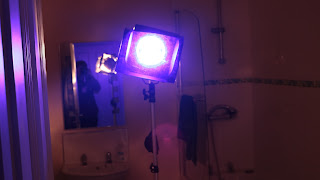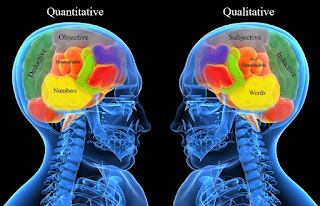Having done the first test with the jib, which admittedly was more of a putting up practise than an actual test, we took the jib and my camera to a location, specifically, Ralph's cross. The location itself was very windy as it is up atop the moors where there is no cover from wind and where it is very cold. First lesson of the day learned, wrap up warm, we were somewhat underdressed for the location and as such we were all somewhat cold during, but that didn't stop me, we didn't drive all the way there to turn around at a bit of British weather. So we got there, set up the Jib and did some practise shots for the opening shot of the film whereby I want to pan down the large stone cross.
As you can see there was improvement towards the end of the day as the shoot progressed but none of the shots where particularly great in terms of whether or not they could be used in a final production. However, for sake of evaluation I can take them apart and say what the issues where so that when it comes to the second practise, in theory I know what to look out for.
Take 1: Shaky, and jolty at the beginning. Also the cross doesn't stay on the original framing, also the camera doesn't start level with the top it is low angled. A positive however is that the end was like a pan should look but the beginning is way too disjointed.
Take 2: Really nice framing and background at the beginning but the same issues as take 1, also it is too fast, it needed to slow down.
Take 3: Ended too low down and cut of the top of Ryan's head, the cross stayed more where it should but still not perfect, the colour also looks good on this.
Take 4: Same shaky issues and such but we fixed the jerky start by starting from higher up so we got more into the groover by the time that we see the cross.
Take 5: Not a lot to say about this, largely the same as 4 but faster which made it too fast.
Take 6: Colour and sky look amazing, however the pan itself is poor, this I know is because it was rushed because I saw the sky as it was and knew we needed to shoot it while the chance was there.
Take 7: Sky looks beautiful but the ground and subject are way too dark and cannot be seen, the pan suffers from the same issues as before which the wind caused us.
Take 8: Aesthetically good but again the pan is jerky and not steady, not much more I can say, we showed progress but not yet what I wanted and not yet anything that could be used in a final production.
Take 9: Went too low down and jerked and sped up near the end, having said that this was the best one up to now as it started well and was smooth from the beginning and the sway from side to side was the lowest it had been.
Take 10: This was the final and best take of the session, at this point the remaining issues were the sway, although it was the lowest it has been, the tilt (as in the fact it isn't level its titled up) and there is a little jerk towards the end of the shot.
In conclusion of this test, come the next test there are some things to consider:
- It doesn't particularly look like a pan it just looks like a tilt, therefore the camera needs to be higher se we get it level.
- The pan needs to be smoother, there are some jerks among the sweeping movement.
- And the biggest issue of them all was that the jib didn't stay still and was swaying from side to side which meant the framing didn't stay the same.
However, I feel I have been too negative and as such here are some positives to be taken from this:
- This was also a recce and the location is fantastic
- We now know that the shot can be done, it just requires practise and care.
- The visuals at times were absolutely stunning and will look fantastic come the real thing.

























